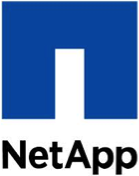Previously, we saw how Boeing division (BDS) and University of Siegen have deployed Multi-hop FCoE and realized significant benefits. This blog highlights similar benefits achieved by Engineering Shared Infrastructure Services (ESIS) department at Netapp.
 Netapp’s ESIS department delivers and maintains end-to-end compute, storage, and network resources for internal Development and Quality Assurance engineers. These resources provide a platform for the innovation that creates storage systems and software, ultimately empowering NetApp customers around the world to store, manage, protect, and retain their data. The requirement was to have agility and versatility in providing storage connectivity between rack/blade Cisco UCS servers and NetApp clustered Data ONTAP storage arrays.
Netapp’s ESIS department delivers and maintains end-to-end compute, storage, and network resources for internal Development and Quality Assurance engineers. These resources provide a platform for the innovation that creates storage systems and software, ultimately empowering NetApp customers around the world to store, manage, protect, and retain their data. The requirement was to have agility and versatility in providing storage connectivity between rack/blade Cisco UCS servers and NetApp clustered Data ONTAP storage arrays.
So, Netapp ESIS implemented an integrated model using Cisco Unified Fabric that supports FCoE from the UCS Servers through the Nexus Series Switches all the way to NetApp storage controllers.

This Unified Fabric architecture reduced the number of management points and provided easy scalability. The TCO benefits were quite significant – Netapp saved $300K in the hardware costs, more than $80,000 in the implementation costs and 1/3 of an FTE’s timedue to streamlined administration. Power, heating, and cooling are also part of the savings.
“We were able to consolidate without affecting the best practices we’d put in place for our LAN and SAN.”
“With multi-hop FCoE, I can connect separate parts of a building that I typically would not have been able to connect. But now, we have FCoE everywhere. Engineers don’t even have to ask, because FCoE is already turned on.”
“We didn’t have to invest in a new solution and take time to implement it because Cisco had anticipated the need for FCoE and already built it in to the Nexus 7000 platform. Because of Cisco’s foresight, we were able respond to new business needs within hours instead of weeks“
— Chris Travis, System Architect and Administrator, ESIS NetApp
The agility of the this infrastructure supports NetApp’s need for business agility, because it responds to changing market conditions and innovative new directions from its staff! More details can be found in the externally published case study.
Hi Amit Jain, Thanks for give us an information about Multi-hop FCoE and you shared benefits achieved by Engineering Shared Infrastructure Services (ESIS) department at Netapp. So I also think that it seems good for us because I am an Engineering Services student, So I think it will helpful for me too.